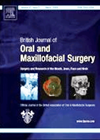
Journal Reviews
Is it time for cone-beam CTs to replace the traditional orthopantomogram in the primary diagnosis of temporomandibular joint disorders?
Cone-beam computed tomographic (CT) requires a lower dose of radiation compared to the multidetector CT and provides much more detailed information in 3D about the bony structures of the temporomandibular joint (TMJ) when compared to the traditional OPG. In this...




